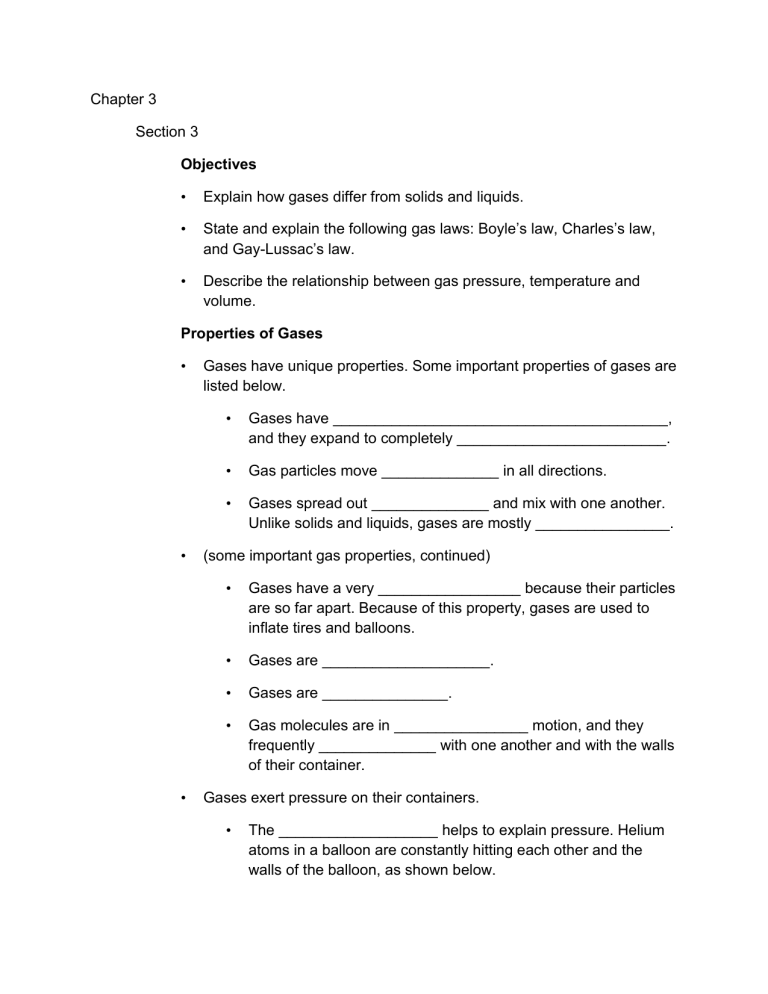Chapter 3 Section 3 Objectives Explain how gases differ from solids

Chapter 3
Section 3
Objectives
• Explain how gases differ from solids and liquids.
• State and explain the following gas laws: Boyle’s law, Charles’s law, and GayLussac’s law.
• Describe the relationship between gas pressure, temperature and volume.
Properties of Gases
• Gases have unique properties. Some important properties of gases are listed below.
• Gases have ________________________________________, and they expand to completely _________________________.
• Gas particles move ______________ in all directions.
• Gases spread out ______________ and mix with one another.
Unlike solids and liquids, gases are mostly ________________.
• (some important gas properties, continued)
•
Gases have a very _________________ because their particles are so far apart. Because of this property, gases are used to inflate tires and balloons.
• Gases are ____________________.
• Gases are _______________.
•
Gas molecules are in ________________ motion, and they frequently ______________ with one another and with the walls of their container.
• Gases exert pressure on their containers.
• The ___________________ helps to explain pressure. Helium atoms in a balloon are constantly hitting each other and the walls of the balloon, as shown below.
• Therefore, if the balloon is punctured, the gas will escape with a lot of force, causing the balloon to pop.
Gas Laws
• Boyle’s law states that for a fixed amount of gas at a constant temperature, the _________________________________________
_______________________________. Likewise, the volume of a gas
___________________ as its pressure ___________________.
• Boyle’s law can be expressed mathematically as:
(pressure
1
)( volume
1
) = (pressure
2
)( volume
2
) , or P
1
V
1
= P
2
V
2
• Charles’s law states that for a fixed amount of gas at a constant pressure, the _____________________________________________
_____________________________________. Likewise, the volume of a gas decreases as its temperature increases.
• As shown below, if the gas in an inflated balloon is cooled (at constant pressure), the gas will _____________ in volume and cause the balloon to _________________.
• GayLussac’s law states that the _____________________________________
______________________________ if the volume of the gas does not change.
• This is why, if a pressurized container that holds gas, such as a spray can, is heated, it may explode.



